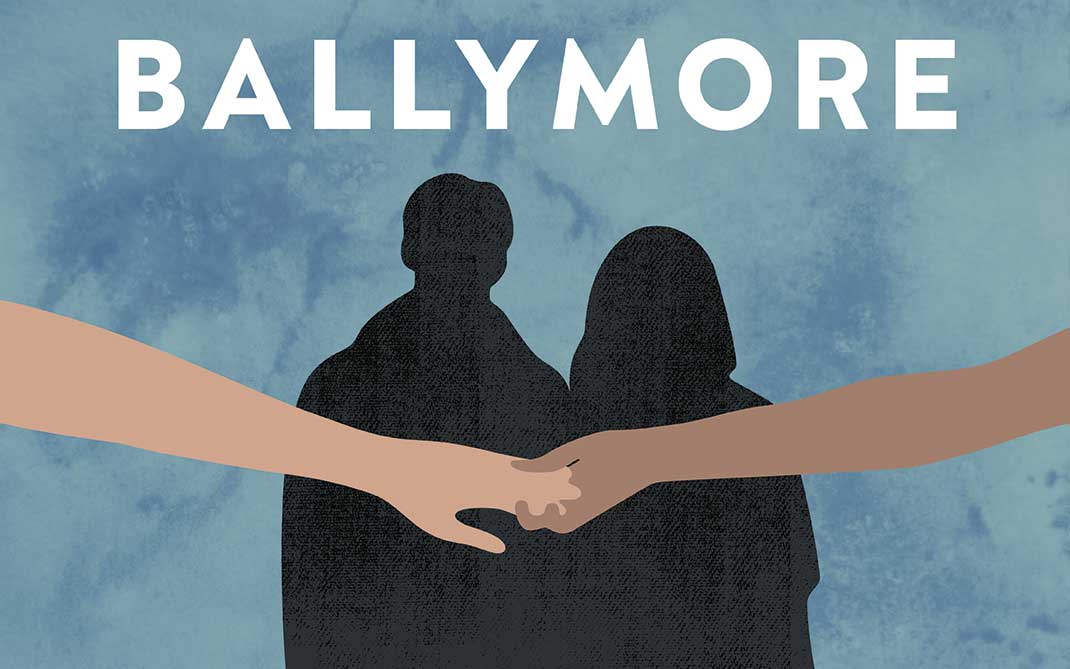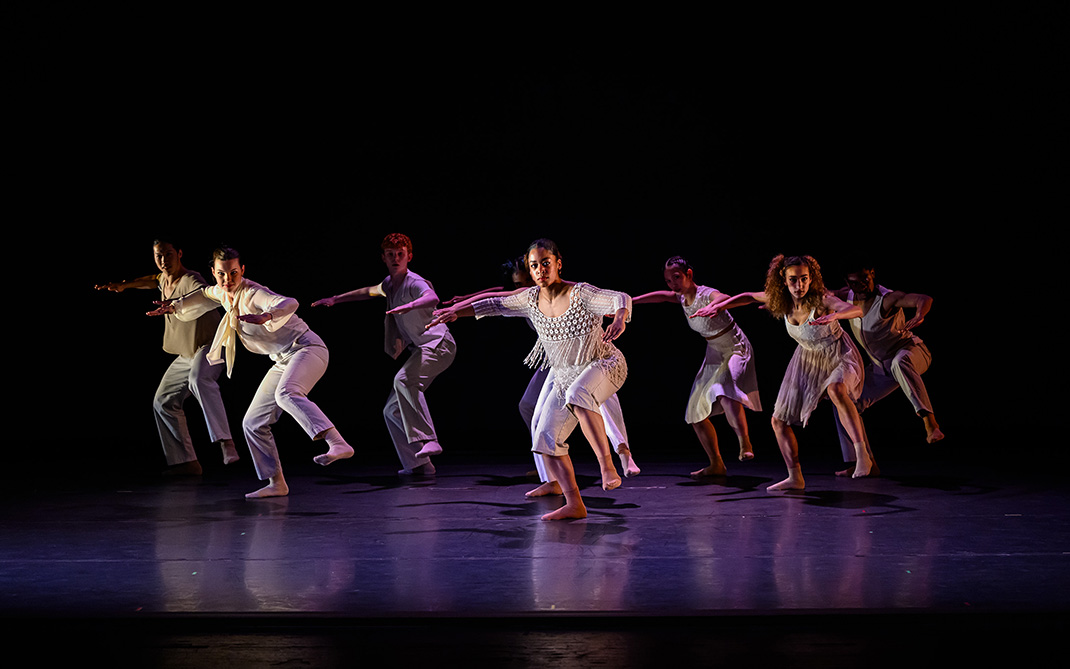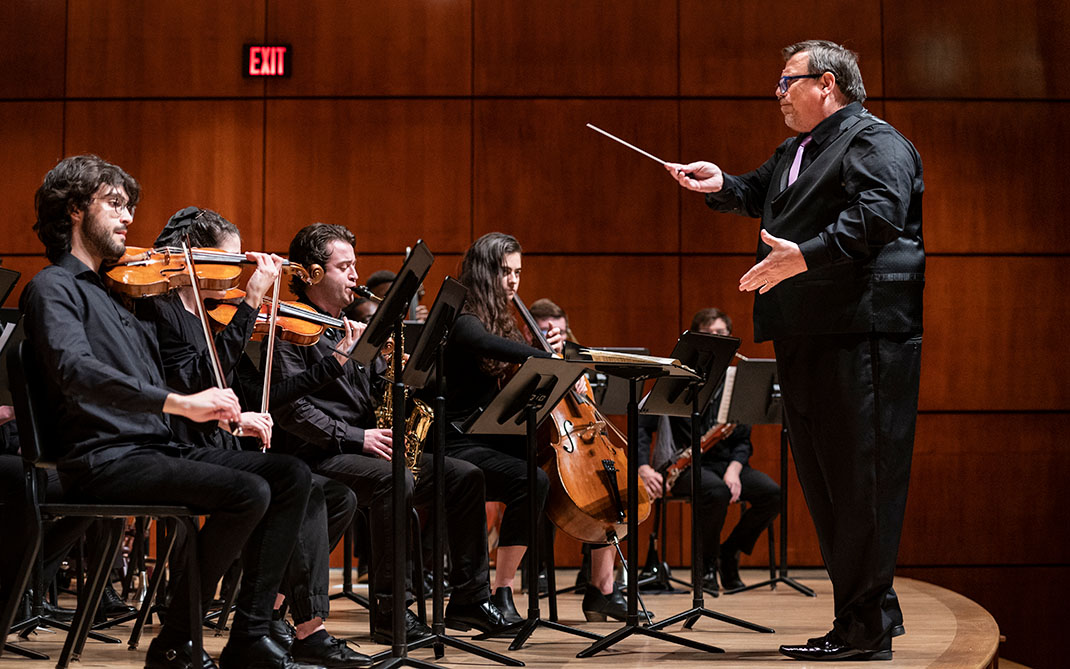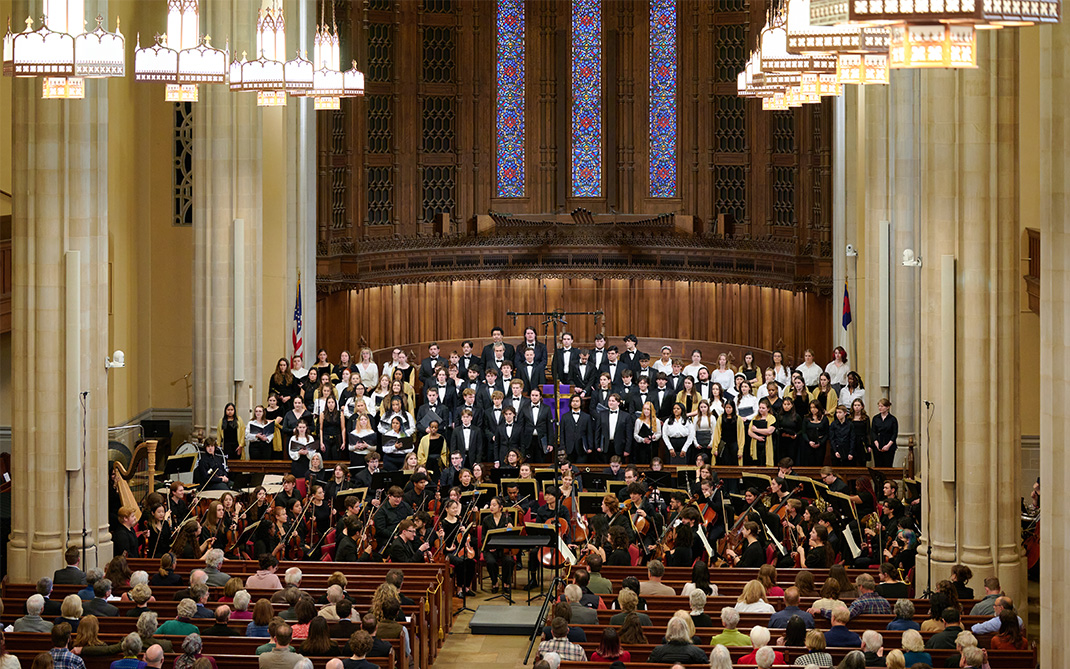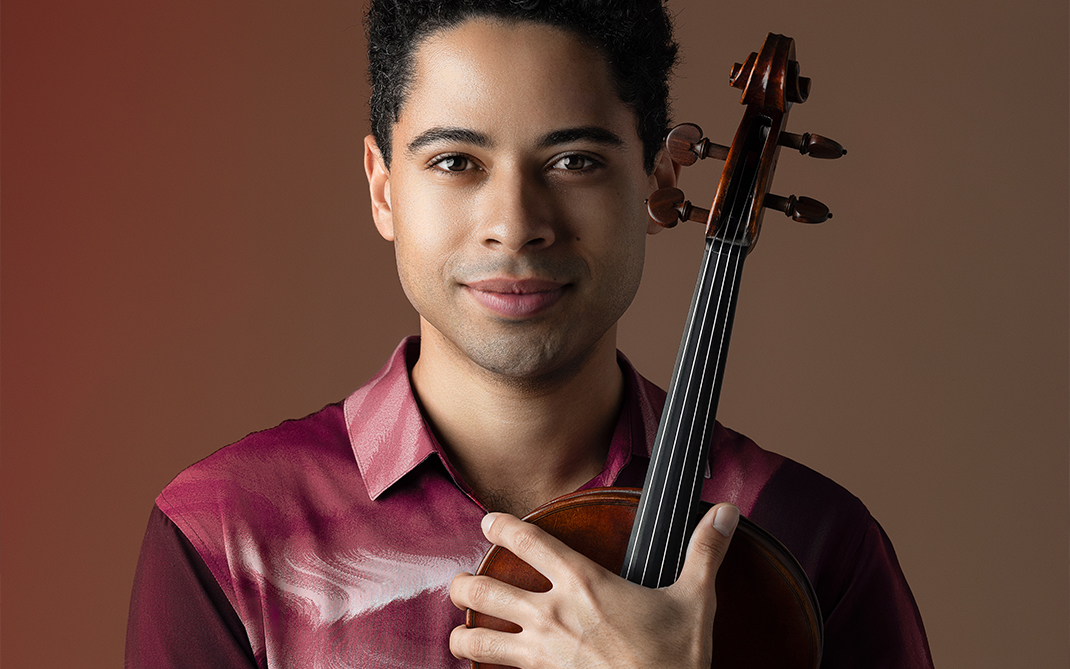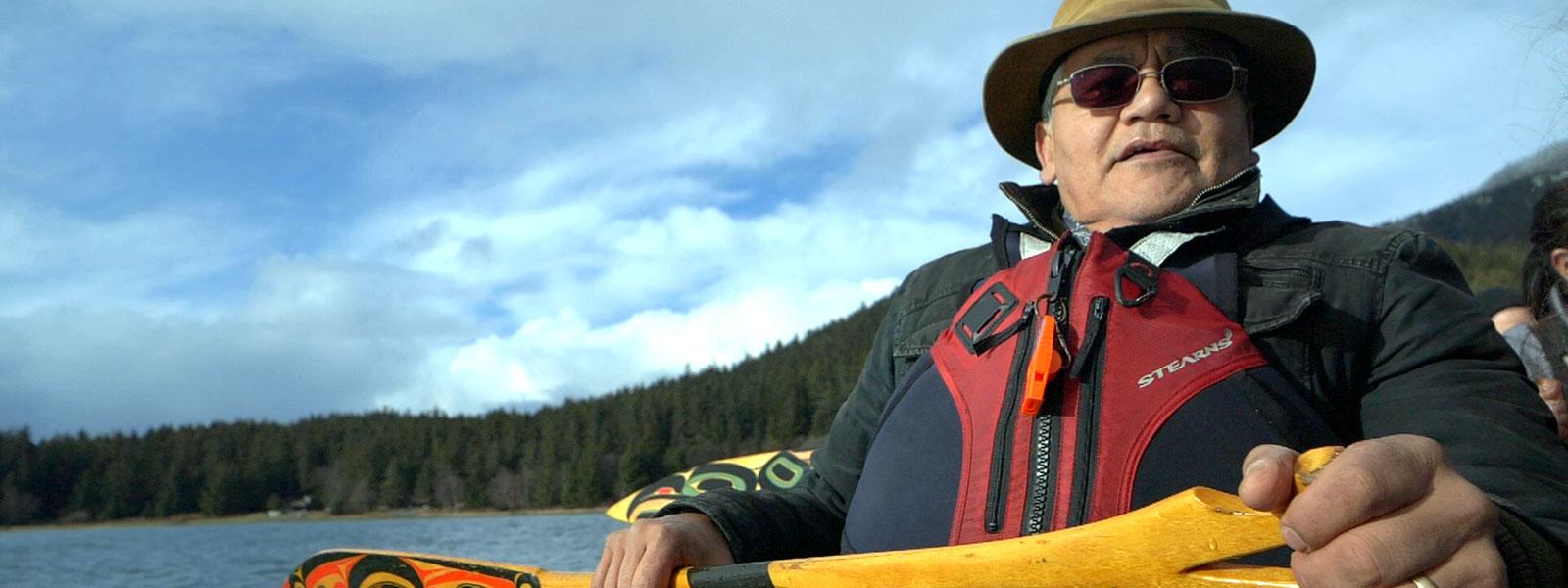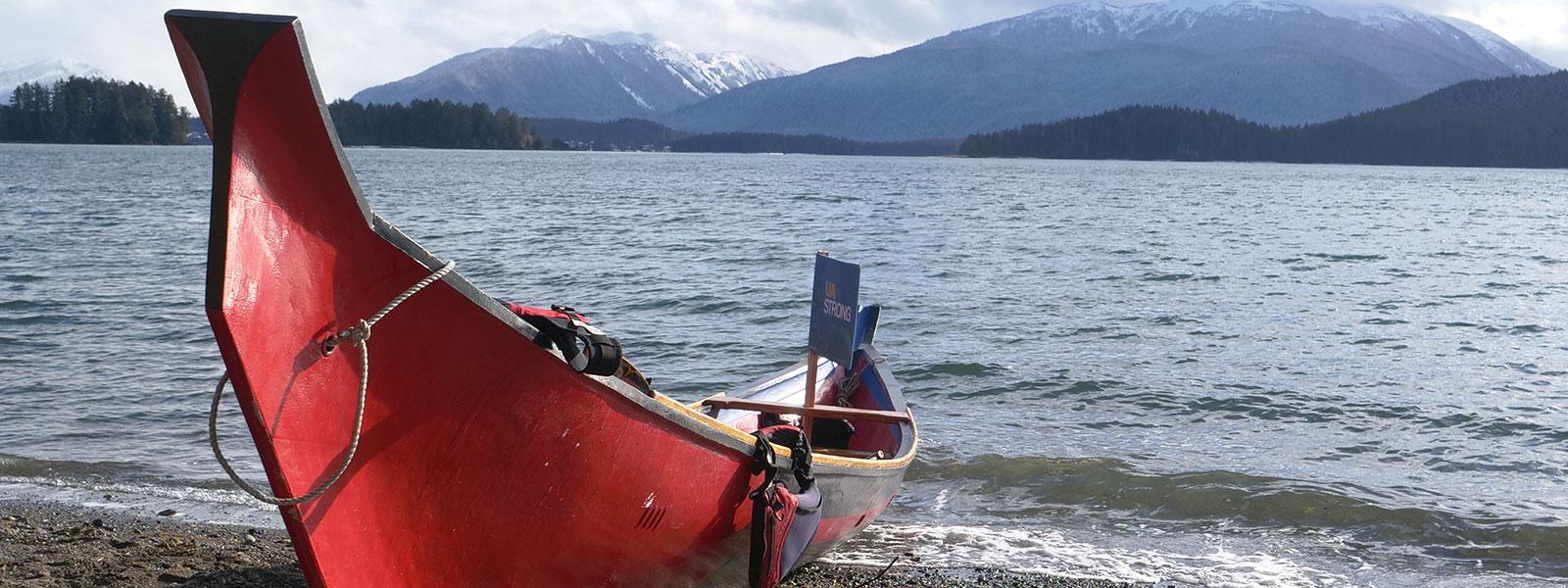Artist As Leader: Wayne Price
Wayne Price’s artistry as a wood carver in the Tlingit tradition of the Pacific Northwest Coast is recognized the world over. His work, which ranges from restoring or duplicating historic totem poles to creating oceangoing dugout canoes with ancient traditional techniques, has been displayed throughout Canada and his native Alaska and as far away as Japan, where one of his canoes is on permanent display at the Hokkaido Museum. This past April, the Rasmuson Foundation, which each year recognizes one Alaska artist for a lifetime of creative excellence and outstanding contribution to the state’s arts and culture, named Wayne its 2020 Distinguished Artist.
Long passionate about honoring and celebrating the traditions of his Indigenous forebears, Wayne has found a more focused mission since receiving a spiritual mandate and embarking on his own sobriety 17 years ago. He now uses his art as a healing tool to guide young people out of addiction and to commemorate all the lives lost to the many traumas inflicted on Indigenous peoples over the centuries.
In this interview with Pier Carlo Talenti, Wayne details how, through tireless artistic practice and focused listening, he became the community teacher, guide and healer he is today.
Choose a question below to begin exploring the interview:
- Can you tell us how you got to where you are now as an artist?
- Do you think of yourself as a leader?
- You decided at a certain point to use your craft and your arts as a tool for healing. When and how did that happen?
- You’ve been sober now, you said, for many years. It sounds like you work with a lot of young people who are just getting sober themselves. What have you had to learn about leading them through a project like this at that point in their lives, when they’re first encountering sobriety?
- As you mentioned, we are living in a time that feels sick. There’s the pandemic. At least in the United States, we’re finally reckoning with a long, poisonous history of injustice. When you think about the role of artists, including yourself, in this world, what would you want to tell artists all over the world and in any culture? What would you like them to do to help people find themselves again?
- You mentioned that you’re thinking about doing a healing dugout for COVID-19. Tell me about how you’re going to put that project into action?
- You described earlier in the interview the moment when you had pieces of yours in a fancy Seattle gallery, and you asked yourself, “Is this it?” Are you where you want to be now?
- Epilogue
Pier Carlo Talenti: Can you tell us how you got to where you are now as an artist?
Wayne Price: I probably got started when I was around 12 years old here in Haines, and I walked into the carving studio here, called Alaska Indian Arts, and smelled the red cedar and the yellow cedar. I got to meet the master carvers that taught me how to carve: Ed Kasko, Leo Jacobs, Jenny Lynn Smith, Johnny Avatock, Clifford Thomas, John Hagen. Nathan Jackson was there for a while. I started out making coffee and sweeping up wood chips, and I got a chance to paint a panel that was carved. It all evolved from then. Fifty years later, I’m still involved in the art world, and I’ve enjoyed a wonderful, wonderful career being able to hammer out a living making art.
Pier Carlo: When did you think you were fully trained? How long did that take?
Wayne: Oh, well, I was involved in the bunch, in the group that we had together for about nine years. Then my journey led me to Ketchikan. I repaired and restored the 26 totem poles that were carved during the CCC [Civilian Conservation Corps] program out at Saxman Village. I thought it’d be a nice summer job and found out that it rains in Ketchikan. A whole lot. You can’t repair totem poles in the pouring-down rain. That job took way lot longer than I thought.
During that time, I also was doing artwork and began a teaching career teaching in the grade school, middle school and high schools in Ketchikan, working with the Johnson-O’Malley Program. That led to teaching classes in Angoon, Juneau, Haines, Sitka. I bounced around quite a bit, teaching and making art and at the same time continuing to repair and restore the totems that were in Saxman, which ended up taking two years. [He laughs.] So it was a long process.
Pier Carlo: Do you think of yourself as a leader?
Wayne: I let the public assume that. If I’m called a master, then I let them call me a master. Or if I’m called the leader, I let the public make that assumption. I am an artist, and I’ve made a lot more wood chips than most people. I don’t really make those statements of my own. Those statements are made of me.
Pier Carlo: You clearly had mentors as you were becoming an artist. Did you think of them as leaders?
Wayne: Yes. I had a deep respect for the carvers that were able to take me in and show me techniques and what you can do with a knife, how to sharpen a knife, how to make tools, what makes it Tlingit art or Haida art or Tsimshian art. There are so many things to learn after the actual carving starts that are very important. You have to take a little bit in every day.
I can still continue to learn from the students I now have in my carving classes ... You can’t stop learning about the art, and you’ll never learn it all. It’s an ever-opening book of culture and knowledge to learn.
I can still continue to learn from the students I now have in my carving classes at the UAS [University of Alaska Southeast] as Associate professor of Northwest Coast Native Arts. They still come up with fresh ideas that I haven’t ever heard of, and some of them are pretty good ideas! You can’t stop learning about the art, and you’ll never learn it all. It’s an ever-opening book of culture and knowledge to learn.
Pier Carlo: And then you decided at a certain point to use your craft and your arts as a tool for healing. When and how did that happen?
Wayne: I’ve spent a great part of my career surviving as an artist. The big goal was to have artwork in The Legacy gallery in First Avenue in Seattle. I accomplished that. I had four or five pieces in their front window at one point in my career. I stood in front of the window and looked across the street, the honking cars, the noise, and the stoplights and traffic and people, and I said, “Is this it?” After a lot of hard work trying to get my work there, I wasn’t quite happy with the view or the result.
Also most of my career involved a lot of mind-changing with alcohol and drugs. Seventeen years ago, I was at the Pilchuck Glass School in Stanwood, WA, and I got involved with a sweat lodge. We did artwork and we did sweats and did artwork and did some more sweats. It was stretched out over a couple of weeks. It was at the end of the big sweat at the end of two weeks that I was granted what some people call a vision. The Creator that keeps me sober told me I had to do a few things: I had to create a healing dugout and create a healing totem.
At that time, I wasn’t feeling very good about myself, and I asked, “OK, I’ve made a lot of totems, and I’ve made a lot of dugouts. How do you make a healing one?” And the Creator told me — just as we are having this conversation; it was like that — that as I’m making a healing dugout, every chip that comes off of the healing dugout represents a life we’ve lost to alcohol and drugs in Indigenous country. Then on all the chips that come off the dugout is the name of someone. A broken home. A broken family. There will never be enough chips.
That brings light to the situation that we’re dealing with even to this very day. Every time that my wife and I have done a healing project, every time we find that to be way too true. And not only Indigenous. This plague belongs to everybody, and it touches everybody’s lives.
Every time I get a calling to do one, I complete it, and there seems to be a calling to do another.
Pier Carlo: How did you put that vision into action? What happened the day after the big sweat?
Wayne: I believed that I’d go home, do the vision, get on back to business, go back to work. There’s no way that I could have ever conceived that it would evolve into what it has turned into in reality. First of all, everybody told us no. Even leading Native corporations said no. All the funding sources told us no, no, no, no.
In fact, we had a pretty blunt start of about six years to the point of, “Well, that was a good idea, but we’ve got to work!” I kicked around pursuing something else in the lines of making a living, and it was my beautiful wife who kept the pressure on that this is what we’re going to do.
We took a drive to Whitehorse in 2008, and we drove down Two Mile Hill. We went past the McDonald’s on the left, and we went through a stoplight. On the right-hand side, there was a sign over a building: “Welcome to the Sundog Carving Studio.” We turned around and pulled into the parking lot, and I walked into a room full of at least 20, 25 students who were all involved in some form carving.
Honest to God, they were the wildest bunch that I’ve ever seen in my whole life. A lot of them were homeless, on the streets, but the one thing they had very much in common was that they were all trying to be carvers. And I said, “This is it.”
I brought a piece of my artwork, and I talked with them all and it led me to Heather and Andrew Finton. Andrew was a high-school shop teacher, and he noticed the kids didn’t drop out if they were able to carve a formline and do some art. So he let them do formline and art, and then they evolved it into a branch of their bed-and-breakfast business. And it caught on from there. They’d been going rough-and-tumble for a few years, and then I showed up, walked up and introduced myself to Heather. I said, “You need me. We’ve got to talk.”
I said, 'You know, I have this idea. You cannot heal unhealthy trees in unhealthy dirt. If you want to make healthy trees, you have to have healthy dirt.'
Over a dinner at Heather and Andrew’s place, I said, “You know, I have this idea. You cannot heal unhealthy trees in unhealthy dirt. If you want to make healthy trees, you have to have healthy dirt.” What I meant was we have to remove the unhealthy trees from the unhealthy dirt and take them to where the healthy dirt is. What that means is that we eventually put our heels together and we said, “Agreed.” We were going to try and do this.
Andrew was a pit bull for seeking funding and support, and in the summer of 2009, I took 19 young people to an island on the Yukon River. We secured a tree in Terrace, BC, and we took that log from Terrace all the way to Whitehorse by the Yukon River. We towed it up the river to that island, all by hand. There’s no machinery. We took the log that is 15,000 pounds out of the Yukon River and up to the bank, and we pulled it 165 feet to get to level ground; you have to build a dugout where it’s level.
We all camped on that island, and we stayed there for two and a half months. We turned that log that was rotten and cracked and had a lot of damage, and I said, “That’s just like us. We fix this log, and then we fix us.” We all stayed out there, and there was no alcohol, no drugs. We stayed, camped out there and completed a 30-foot dugout canoe. By mid-August we were able to paddle that canoe off that island and take the students back home.
That was the big start for doing the healing dugouts and a very successful project. We had almost a 50% recovery rate.
Pier Carlo: Wow. You’ve been sober now, you said, for many years. It sounds like you work with a lot of young people who are just getting sober themselves, so they’re vulnerable and raw, I’m guessing. What have you had to learn about leading them through a project like this at that point in their lives, when they’re first encountering sobriety?
Wayne: I think that the flow of life today is one of electronics that’s designed to bring us all together in communication. And it doesn’t. It does not do that. It separates and isolates.
We as a people need to remember our culture and remember our past, that the Pacific Northwest Coast Native art as a culture and a history has been going for 10,000 years and it should never be doubted. It got us through the hardest of times, it got us through the best of times. It’s never let us down, and it’s going to continue to take care of us and watch over us.
Also that the mind-changers were never part of our culture. It was never who we are; it doesn’t belong to us. This was introduced. The introduction of the boarding schools and the introduction of the mind-changers led to the decimation of whole cultures to complete extinction. The results from that are still being felt within the Indigenous people today.
Pier Carlo: I like the way you’re describing drugs and alcohols as mind-changers. You’re leading your students back to their true selves.
Wayne: Everyone. There’s a sacred circle. Everything that’s Indigenous is done in a circle, not in a straight line. We always have the circle, and we always have the four directions. Within that circle, the four directions are divided into quarters. They’re red, yellow, black, and white. That’s red people, yellow people, black people, and white people. That is a very old, old symbol that goes way back. That should be being paid a lot more attention to than it is.
A lot of the unrest that we’re going through now is probably neglect of our actually true history, what we are and who we are as human beings. Then when you add the mind-changers to it, it escalates to bad choices. So the end result can only be all of what we’re seeing, and it’s not going to change until they start making some better choices in the long run.
Pier Carlo: As you mentioned, we are living in a time that feels sick. There’s the pandemic. At least in the United States, we’re finally reckoning with a long, poisonous history of injustice. When you think about the role of artists, including yourself, in this world, what would you want to tell artists all over the world and in any culture? What would you like them to do to help people find themselves again?
Wayne: Well, let’s not forget the role art plays in all cultures. I go back and think of the terrible fire in France of the church that was a thousand years old. As the fire was burning, they weren’t necessarily putting the fire out so much as running in to the fire and saving the art. That’s how important it was to try and save all they could during that terrible tragedy.
Art is a foundation of a lot of cultures, not just my own, and the role and the language and the meaning of the art sometimes cannot be stated in words; it’s more of a feeling. And if we do that art correctly, people will get a feeling from that artwork.
In all cultures, art means enough to somebody that a person who has nothing to do with it — he’s just a fireman — would run into a burning building and grab artwork and then try and carry it back out. Art is a foundation of a lot of cultures, not just my own, and the role and the language and the meaning of the art sometimes cannot be stated in words; it’s more of a feeling. And if we do that art correctly, people will get a feeling from that artwork.
I know. I’ve heard stories of the healing totem I did in the main street in Whitehorse by the Yukon River. It was a 40-foot totem I did with my students that addressed the atrocities of the residential schools in Canada and North America and South America and Australia. It was the first monument ever done that even acknowledged what happened during those times and how bad it really was. People who come to that art are, without seeing the story, without knowing anything about what that totem means, they get a feeling from it. And if you go to that totem now, there are coins that are put into the cracks, sage prayer packets are left, and people leave tokens at this piece of art. Some of them know what it is; some of them don’t. Some of them just get that feeling just from the art.
As an artist, when you can get into that part of creating healing with art, then the results could be great. I’m not the only one that can do this. There’s got to be others, and it’s been going for a long time.
Even when we were carving the totem itself, we were by the Yukon River, and they were worried about the river people — that’s homeless people, and they were all inebriates — condemning and sabotaging the art. They came by. We call them our teachers because they teach us how not to live. We got to talk with them, and they said, “Hey, what’s this totem you’re making?” And I said, “Well, this is a totem that addresses the residential-school atrocities of all the students that were in the boarding schools. This is a healing totem that we’re creating so that maybe they can be acknowledged, find closure.”
One hundred percent of every one of those homeless people was residential school. One hundred percent. Every one of them. And I told them, I said, “I’m carving this totem for you, and you got to watch it. You got to take care of it. You got to watch for it, and you got to guard it. I’m asking you to be its protectors.” There are a lot of reasons for those coins to disappear on that totem. And they never do. They leave it alone.
Pier Carlo: You mentioned that you’re thinking about doing a healing dugout for COVID-19. Tell me about how you’re going to put that project into action?
Wayne: Well, right now we’re looking for support, a backer, and they would have to communicate by email or with my wife. Once we establish that part of it, then we’ll set up.
There’s always a lot of ceremony that’s involved. We don’t even touch the log until we have a proper blessing of the log to the site. We have a big feast about the healing journey that we’re all going to put our minds together and create as we’re going along.
One of the dugouts was for alcohol and drugs. If you lost somebody or you know somebody that’s hurting from alcohol and drugs, you have an opportunity to put that name on a wood chip. And when we burn the chips in the sacred fire at the end of the project, more than once the chips have taken two days and two nights to burn. Once the fire has started, everybody stays until it’s all done. There’s a healing time and remembrance of those we’ve lost or those we want to remember or those we want to try and help. There’s singing, there’s drumming.
If we do nothing, then that means we agree. If we try to do something, then we don’t agree. That’s the way I approach it. As hard as I ever went to moving my bicycle in a snowstorm to get to the liquor store, I will spend the same amount of energy, if not more, trying to find a healing path and recovery and bring as many brothers and sisters as I can with me.
Pier Carlo: You described earlier in the interview the moment when you had pieces of yours in a fancy Seattle gallery, and you asked yourself, “Is this it?” Are you where you want to be now?
I’m enjoying the second chance that I’ve gotten in my earth-time to the fullest every day. I’m doing exactly what I need to do, and I’m with who I want to be with. I’m accomplishing the goals that are brought before me. If the calling is for me to be there, then I’ll probably be there.
Wayne: I’m enjoying the second chance that I’ve gotten in my earth-time to the fullest every day. I’m doing exactly what I need to do, and I’m with who I want to be with. I’m accomplishing the goals that are brought before me. If the calling is for me to be there, then I’ll probably be there.
Epilogue
Life, like art, does not often unfold in a straight line. The same goes for leadership. Lessons we can take from our time with Wayne Price include:
- Pay attention to what guides you. Spirit can be a powerful partner to guide oneself. This is different than being self-led (guided by one’s own interests and values). Find your unique source of inspiration and information that goes beyond intellect.
- Art can be used for healing. Recognize how the impact of your offerings may impact people in ways you are not expecting. Artist leaders can be agents of transformation.
- Art can be used for community. Few things transcend cultures and bring people together as much as art. Remember that being an artist leader is bigger than just you.
- Lead others with purpose and meaning. Art is bigger than something to be “sold in a gallery.” People may purchase your wares once, but they will become dedicated partners once they see how the work has a bigger significance.
- Cultivate a dedication to helping others. Leaders make impact directly (by interacting with the groups they serve) and indirectly (through how their offerings influence the world). Figure out which leader strategy you are using and be intentional about how you wish your work to benefit others.
